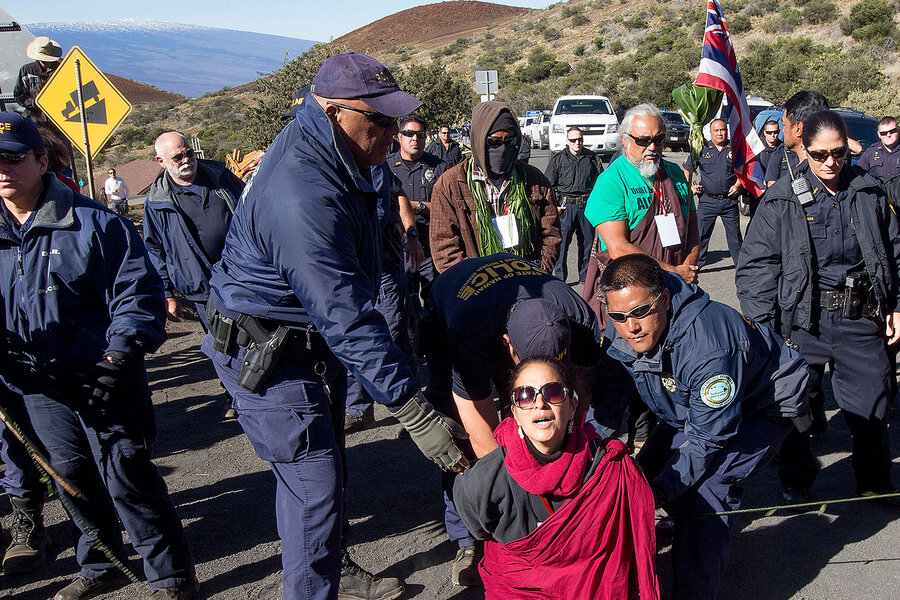Can science and religion coexist? Not on Mauna Kea, say Hawaiians.
Loading...
Workers plan to return to the contested Mauna Kea mountaintop after a months-long layoff. They will be repairing tools and getting ready to recommence construction, Thirty Meter Telescope announced Tuesday. And native Hawaiian protesters who hold the mountain sacred say they plan to meet them.
"Those are basically their weapons on top of the mountain, so to burst into our grandmother's house and hold a shotgun to her and your gun jammed, you think we're really going to sit there and let you fix the gun?" Lanakila Mangauil, a leader of the TMT opposition, told Brenton Awa for KITV.
The debate over whether a developer can build a telescope on a mountaintop that Hawaiians hold sacred has turned the Mauna Kea peak into a physical symbol for a discussion about the coexistence of science and religion.
Protesters have blocked construction since July. The state has arrested the protesters several times by enforcing a law against long-term camping. Eventually they reached a compromise – the protesters would stop sleeping on the mountain if officials would give them sufficient notice before workers arrived, Jennifer Sinco Kelleher reported for the Associated Press.
Debate over the Mauna Kea project seems to pit conservationists against industry, and religion against science. But for native Hawaiians for whom worship intersects stewardship of the environment, concerns about conservation and freedom of religion have blended into a common cause.
Thirty Meter Telescope spokesman Scott Ishikawa told KITV that the telescope project can offer scientific advancement and business opportunities for the island and is broadly supported by many Hawaiians.
"We are deeply committed to respectful stewardship of the mountain, and to the vision that integrates science and culture in Hawaii and enriches the educational opportunities and local economy," said the International Observatory Board of Governors Chairman Henry Yang in a news release.
But protesters – unimpressed by Yang's arguments – are fomenting a new protest plan to reflect the changing seasons and Hawaiian tradition by changing from a red to a white theme, opposition leader Lanakila Mangauil wrote on Facebook.
"Make ready for the call," he wrote Tuesday. "We will call for the color of white when this next stand comes."
As the debate wages on, both sides are still awaiting a ruling from the Hawaii Supreme Court on whether or not a permit issued to construct the Thirty Meter Telescope is valid.
"We will continue to follow the state's laws, procedures and processes, as we have done for more than eight years, while respectfully awaiting the [Hawaii] Supreme Court's decision," said Yang in a news release.
A poll of 631 people conducted by TMT shows 15 percent of Hawaii residents strongly oppose the telescope project, but 37 percent strongly support it, although opposition was stronger among native Hawaiians.
The poll has not impressed the project's fiercest opponents, who cite environmental concerns, religious practice, and concerns about endemic injustice toward native Hawaiians. As a commenter using the name Pohaku Keaau wrote on the KITV website:
Like question #1: There should be a way for Hawaiian culture and science both to exist on Mauna Kea. No, there is not. This is a lie, TMT will destroy our culture because it is our Genesis, our beginning, our father, our mother, our sister, our brother.... Would you allow TMT to be built on your church?






